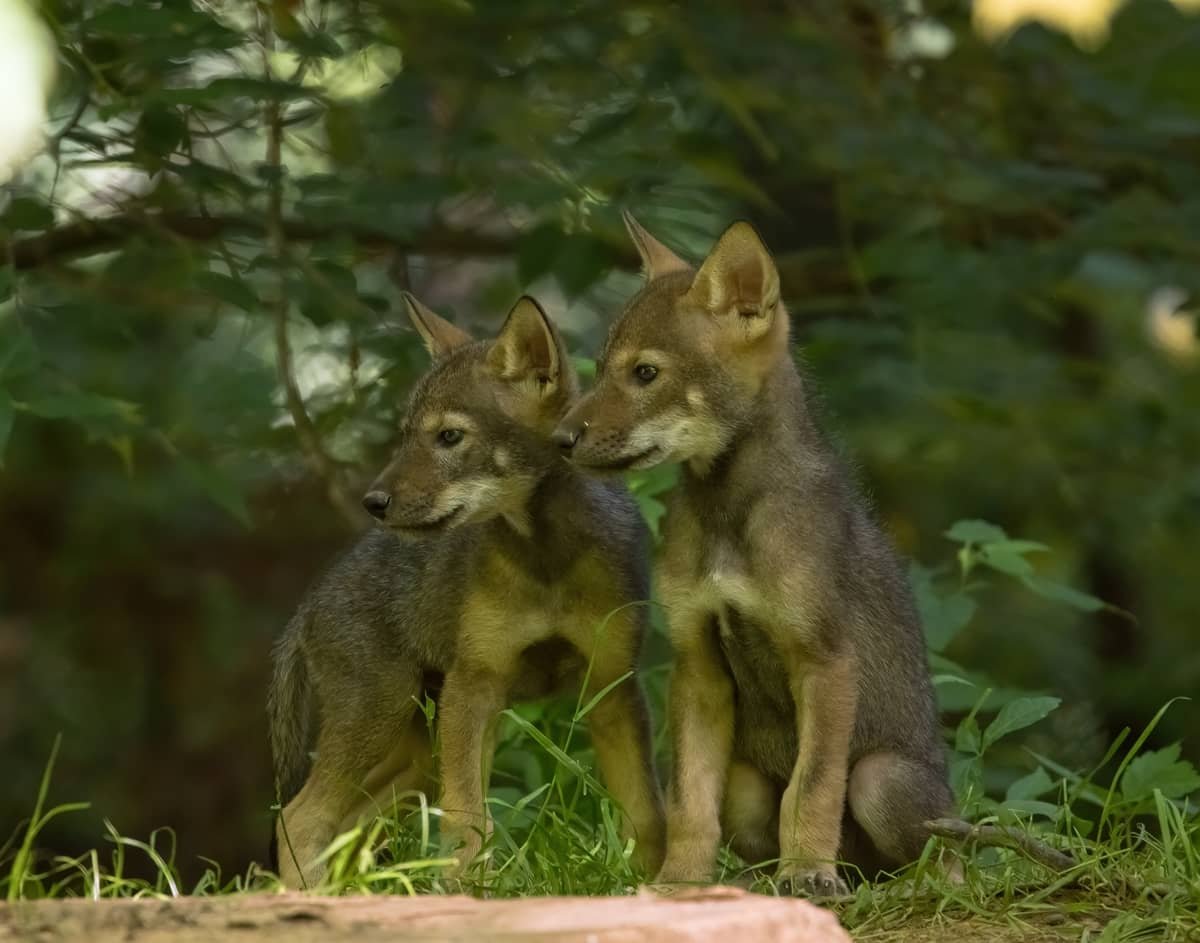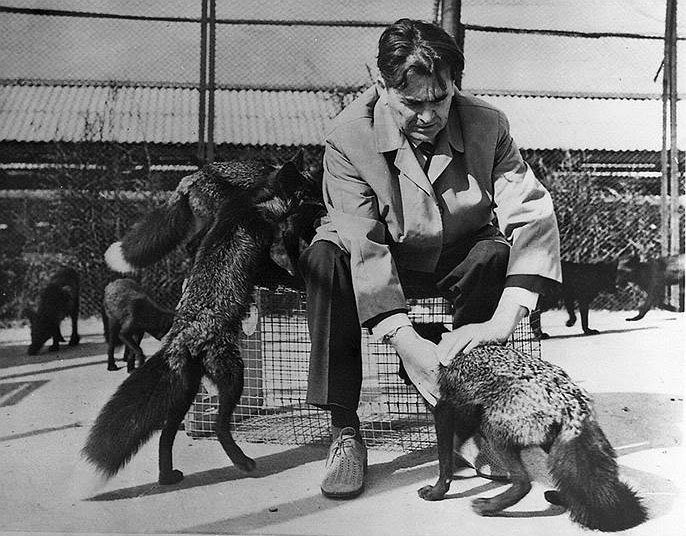Once upon a time, the theory of wolves being domesticated by humans was proposed by none other than Darwin himself, so it gained a lot of prominence. After all, Darwin doesn’t make mistakes, right? However, numerous studies now exist that prove that while dogs did indeed originate from wolves (specifically, several species including coyotes and jackals), but they joined humans through natural selection. It took several millennia for humans to realize the usefulness of dogs. This article might be a bit challenging to grasp, but reading it will help you gain a better understanding of dogs.
What scientists say
The modern theory of dog origins suggests that they could have become domesticated even without direct human intervention. When humans transitioned from a nomadic lifestyle to settled communities, garbage heaps started to form near their settlements. These heaps attracted wolves, and those among them who were less afraid of humans began to live nearby and feed on the scraps. There was no need to go hunting to find something edible; all they had to do was be slightly more friendly towards humans than their peers. Over time, these wolves, who showed loyalty to humans, started living separately from wild wolves, interbreeding among themselves, and thus solidifying the traits necessary for coexistence with humans.
Why couldn’t humans tame wolves?
Scientists estimate that the origin of dogs dates back approximately 15,000 years ago, during the Mesolithic era. This was a time when the Ice Age was just coming to an end, and humans were transitioning to a settled way of life. Men were developing stone tools and going out for hunting, while women gathered berries—those were the primary activities. The old hypothesis that humans simply plucked wolves from the wild and domesticated them for their own purposes, such as protection or herding, does not withstand scrutiny based on modern knowledge about wolves. The humans of the Mesolithic era could not tame wolves, and here’s why.
1. What reason?
First and foremost, was it even necessary? Humans and wolves have always been natural enemies, competing for resources and killing each other. It is more likely that if an ancient human encountered a defenseless wolf cub, they would simply kill it rather than take it in and expend scarce and hard-to-obtain resources on it.
2. Wolves are difficult to socialize
Even for dogs, the critical period of socialization is very short, lasting up to a maximum of 16 weeks. For wolves, this period ends on the 19th day after birth! In the Wolf Park, a research facility in Indiana, specialized staff take in wolf pups when they are only 7-9 days old. It is crucial for a wolf to be exposed to humans before their eyes open so that imprinting can occur. Hand-rearing is a demanding task, and not everyone is capable of it (imagine how challenging it would have been for ancient humans focused on survival). Furthermore, wolves still maintain a considerable distance from humans and fear them. There are no canine affections – even relatively socialized wolves pose a danger to an unprepared individual because they remain very skittish.

3. Low Infantilization
Modern knowledge about wolves indicates that they never develop the same level of infantilization seen in dogs. Even socially conditioned and semi-domesticated wolves will not sit and wait for their owner at home. They are always seeking opportunities to venture out and pursue their own endeavors. Maintaining wolves in close proximity requires significant ingenuity because they are inventive creatures themselves. There are studies showing that wolves learn well through observational learning and imitation. Unlike even the smartest dogs, they can replicate actions after careful observation. This has allowed many wolves to escape their enclosures by unlocking their locks (they observed caretakers and then replicated the actions). Moreover, they were capable of opening not only their own cages but also those of neighboring dogs. Wolves learn intuitively, while dogs require repetitive training.
4. Wolves are untrainable
This point follows from the previous one – wolves are highly intelligent, but they do not tolerate pressure from humans. For instance, lions and tigers can be trained to jump through a burning hoop, but wolves cannot even learn to sit on command. Zoologist Erik Zimen attempted to train socialized wolves to pull sleds. However, breeds like Huskies and Malamutes excel at this task, and they are considered closely related to wolves. Zimen spent several months with daily training sessions but did not achieve significant results. The wolves reluctantly accepted wearing harnesses but absolutely detested any invasion of their personal space, leading to constant fights within the team.

There are several other reasons with complex explanations from the field of genetics – regarding the heritability of genes, as well as from archaeology – with a lack of substantial evidence of wolves being kept in ancient settlements. One thing is crucial: primitive humans simply lacked the opportunities and abilities to engage in such complex selection processes.
Belyaev’s foxes
The confirmation of this theory also came from the work of Soviet scientist Dmitry Belyaev. In 1959, at the Institute of Cytology and Genetics in Novosibirsk, he began an experiment with foxes. The foxes were selected for breeding based on a single trait: friendliness towards humans. Over several generations, the foxes developed other traits found in domestic animals, such as floppy ears, spots, a curled tail like that of a Husky, and a more graceful physique compared to wild foxes. Along with the external changes, there were also changes in behavior: the “domesticated” foxes wagged their tails like dogs and overall interacted with humans. The level of understanding human gestures in friendly foxes was similar to that of domestic dogs, which is the primary characteristic that sets dogs apart from wolves. You can read more about this in the research conducted by Duke University.

One of the most famous experiments comparing wolves and dogs goes as follows: a person hides food and indicates the desired direction with a glance or gesture. Dogs and domesticated Belyaev foxes understood the gesture, while even wolves raised with humans did not. And yet, the Belyaev foxes were not selected based on their ability to interpret human signals, but solely on their non-aggressiveness! In other words, the ability to interact developed through domestication, along with floppy ears and a curled tail.
Why We Need Each Other
For thousands of years, humans have lived alongside dogs. They have evolved together, influencing each other’s paths. Unlike wolves, dogs have the ability to digest carbohydrates, which likely developed as a result of dogs consuming similar foods to humans, including grains. Dogs have a positive impact on us: it has long been known that the presence of a dog can reduce blood pressure and heart rate. More recently, scientists have discovered the existence of an “oxytocin loop” when a person and their dog gaze into each other’s eyes, triggering the release of the happiness hormone oxytocin in both of them, similar to the bond between a mother and her newborn baby. As dog owners, we have long recognized the pleasure we derive from connecting with our dogs.
It’s possible that it wasn’t humans who domesticated wolves, but rather dogs who domesticated humans. Regardless, it has been mutually beneficial for both species.

Sources
The study of wolves, like other animals, is highly fascinating! For more in-depth reading on what science currently knows about them, you can explore the following books and courses:
“Dogs: A New Understanding of Canine Origin, Behavior, and Evolution” by Lorna and Raymond Coppinger
“The Genius of Dogs: How Dogs Are Smarter Than You Think” by Brian Hare and Vanessa Woods
“How to Tame a Fox (and Build a Dog): Visionary Scientists and a Siberian Tale of Jump-Started Evolution” by Lee Alan Dugatkin and Lyudmila Trut
Dog emotion and cognition course at Duke University
These resources provide valuable insights into the subject of wolves, dogs, and the fascinating world of animal behavior and evolution.





